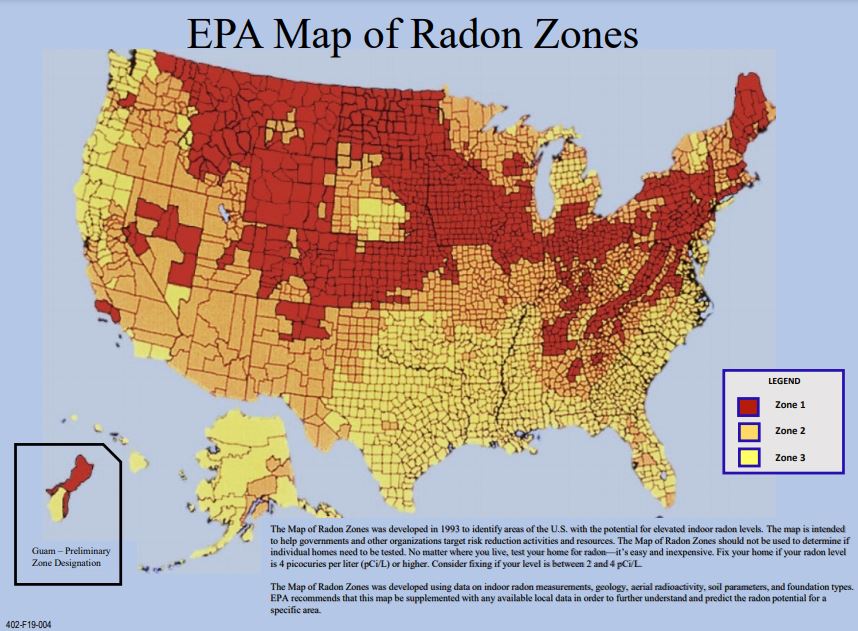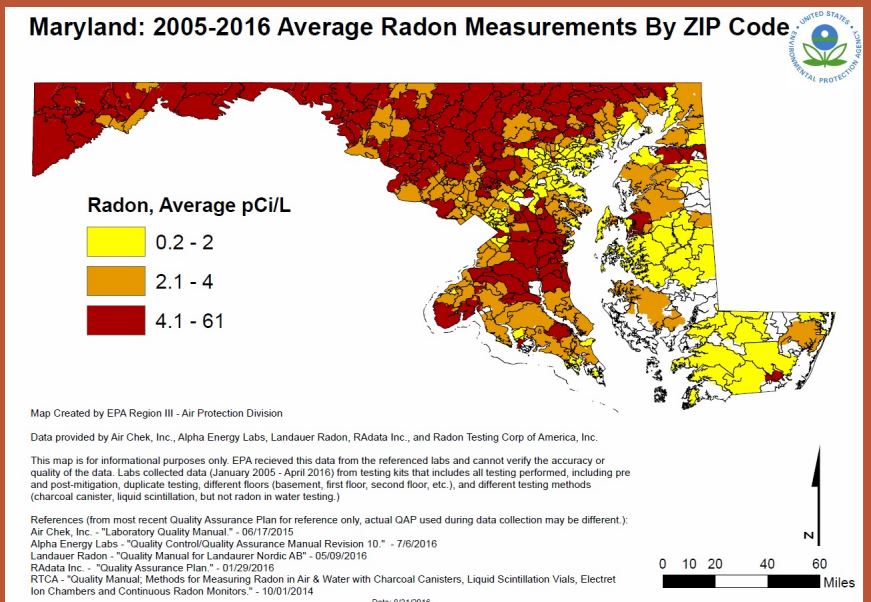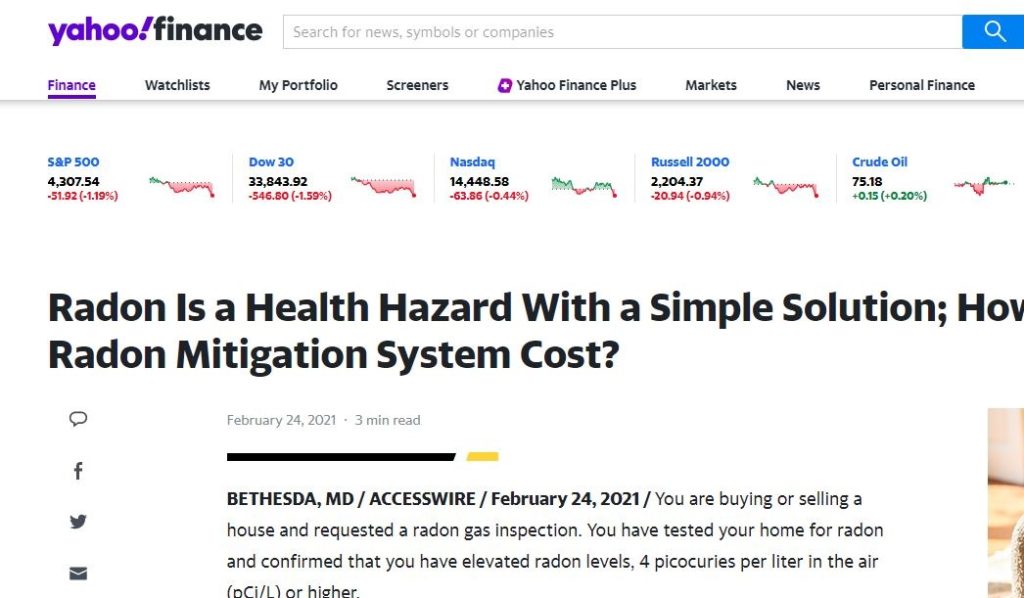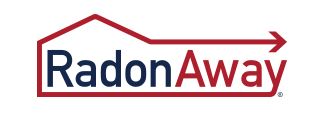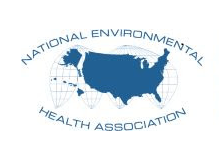Dangerous levels of radon
Radon is a radioactive gas that is formed naturally from the decay of uranium and other radioactive elements in the soil. It is a colorless and odorless gas that can accumulate in homes and buildings and can be harmful to human health.
Long-term exposure to dangerous levels of radon can increase the risk of developing lung cancer, especially in smokers. The risk of lung cancer from radon exposure depends on several factors, including the amount of radon in the air, the duration of exposure, and individual factors such as smoking history and overall health.
The US Environmental Protection Agency (EPA) recommends that homes be tested for radon and that action be taken if the radon level is 4 picocuries per liter (pCi/L) or higher. Levels between 2 and 4 pCi/L may also warrant further action, depending on individual circumstances.
If you suspect that you may have dangerous levels of radon in your home, you should contact a qualified radon mitigation professional to conduct a radon test and install a radon mitigation system if necessary. Radon mitigation systems can reduce indoor radon levels by up to 99%.

